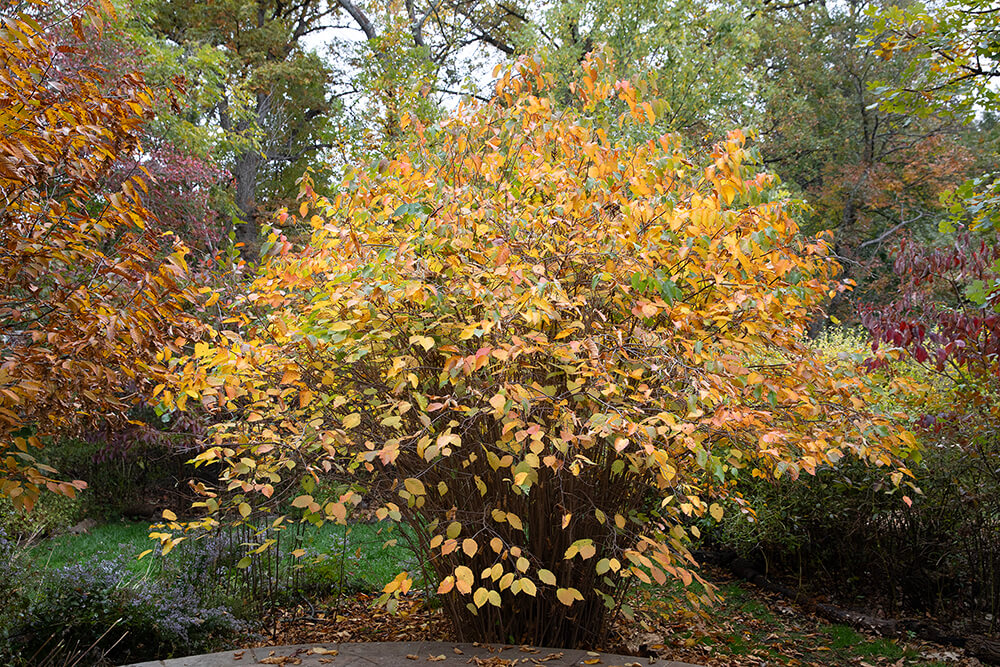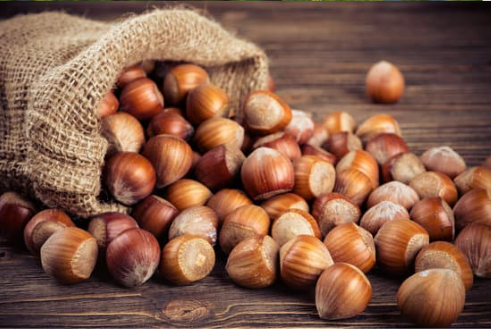Yes, deer do like hazelnuts. These nuts are a favored treat for many deer.
Hazelnuts, also known as filberts, are a nutritious and tasty snack for deer. They are packed with energy, making them an attractive food source. Deer have a strong sense of smell and can easily locate these nuts in the wild.
Hazelnuts provide essential fats and proteins that help deer stay healthy, especially during colder months. In regions where hazelnuts grow naturally, deer often visit these areas to forage. If you have hazelnut trees nearby, you might notice deer frequenting your property. Understanding what deer like to eat can help in managing and coexisting with local wildlife.

Credit: www.youtube.com
Introduction To Deer And Hazelnuts
Understanding the relationship between deer and hazelnuts can be intriguing. Deer are known for their browsing habits. Hazelnuts are a favorite snack for many animals. What makes this combination special?
The Fascination With Deer
Deer are graceful creatures. They roam forests and fields. Their presence is often a sign of a healthy ecosystem. Deer have a diverse diet. They eat plants, leaves, and fruits. This includes nuts and seeds.
What Are Hazelnuts?
Hazelnuts are small, round nuts. They come from the hazel tree. These nuts are rich in nutrients. Humans and wildlife both enjoy them. Hazelnuts have a hard shell. Inside is the tasty nut. This nut is high in protein and fat.
Deer’s Natural Diet
Deer are often seen grazing peacefully in forests, fields, and even backyards. Their diet is varied and depends on the availability of food in their natural habitat. Understanding what deer eat can help us know whether they like hazelnuts.
Common Foods For Deer
Deer have a diverse diet. They are herbivores, so they eat many types of plants.
- Grasses: Deer graze on various grasses, especially in the spring and summer.
- Leaves: They eat leaves from trees and shrubs.
- Fruits and Nuts: Deer enjoy fruits like apples and berries, and nuts such as acorns.
- Twigs and Bark: In winter, deer often munch on twigs and bark to survive.
Seasonal Diet Variations
Deer’s diet changes with the seasons. This helps them adapt to different weather conditions.
Spring: Fresh grasses and new leaves are abundant.
Summer: Deer eat more fruits and berries. They continue to graze on grasses.
Fall: Nuts like acorns become a major food source. Deer also eat fallen fruits.
Winter: Food is scarce. Deer eat twigs, bark, and evergreen leaves.
Understanding these seasonal variations helps us know if deer like hazelnuts. Hazelnuts are nuts, so deer might eat them in fall when nuts are a big part of their diet.
Hazelnuts In The Wild
Have you ever wondered if deer enjoy hazelnuts? Let’s dive into the world of wild hazelnuts. These nuts are not only delicious for humans but also a sought-after treat for various animals. In the wild, hazelnuts provide essential nutrients and energy to many creatures. But where exactly do these nuts grow, and what makes them so special?
Where Hazelnuts Grow
Hazelnuts are found in temperate regions. They thrive in areas with mild summers and cool winters. You can find them in North America, Europe, and Asia. These nuts grow on hazel trees and shrubs. The trees prefer well-drained soil and partial sunlight. They often grow in forests, along streams, and in open fields. In these areas, deer frequently roam and search for food.
Nutritional Value Of Hazelnuts
Hazelnuts are packed with nutrients. They are rich in healthy fats, protein, and fiber. They also contain vitamins and minerals, such as:
- Vitamin E
- Vitamin B6
- Magnesium
- Calcium
- Iron
These nutrients are vital for deer. They help in energy production and overall health. Consuming hazelnuts helps deer build fat reserves. This is crucial for surviving harsh winters. The high protein content aids in muscle growth and repair. The fiber helps with digestion. In short, hazelnuts provide a balanced and nutritious diet for deer in the wild.

Credit: choosenatives.org
Deer’s Attraction To Hazelnuts
Deer are known to be quite selective when it comes to their diet. They often seek out nutritious and palatable foods in the wild. Among these foods, hazelnuts have garnered significant attention. Deer seem to have a natural attraction to them. This section will explore observations in nature and scientific studies that highlight this fascinating behavior.
Observations In Nature
Naturalists and wildlife enthusiasts often observe deer in their natural habitats. They have noted that deer frequently visit areas where hazelnut trees grow. These keen observers have seen deer eating hazelnuts directly from the trees. They also find evidence of deer feeding on fallen nuts.
Many have reported that deer show a preference for hazelnuts over other nuts. This behavior is particularly evident during the fall season. During this time, hazelnuts are ripe and ready for consumption. This seasonal availability makes hazelnuts an attractive food source.
| Observation | Details |
|---|---|
| Feeding Time | Mostly in the fall |
| Preferred Location | Under hazelnut trees |
Scientific Studies
Several scientific studies have explored the diet of deer. Researchers have found that hazelnuts are a favored food item. Studies show that hazelnuts provide essential nutrients. These include proteins, fats, and carbohydrates, which are vital for deer’s health.
One study conducted in a forested area revealed interesting results. The researchers placed different types of nuts in the deer’s habitat. They found that deer chose hazelnuts more frequently than other nuts. This preference suggests that hazelnuts are more appealing to deer.
Another study analyzed the nutritional content of hazelnuts. The study showed that hazelnuts have a high energy value. This makes them an excellent food source for deer, especially in the fall. The energy from hazelnuts helps deer build fat reserves for winter.
- High energy value
- Essential nutrients
- Preference over other nuts
Potential Benefits For Deer
Deer find hazelnuts tasty and nutritious. These nuts provide essential fats and proteins, supporting their health and energy. Hazelnuts also help deer prepare for winter.
Deer often browse for various types of food in the wild. Hazelnuts can offer several benefits to these animals. These nuts are not just tasty. They also provide essential nutrients and energy.Nutritional Benefits
Hazelnuts are rich in vitamins and minerals. They contain vitamin E, which is good for a deer’s coat. Hazelnuts also have magnesium, which supports muscle function. These nuts can help keep deer healthy.Energy Boost
Deer need energy to survive in the wild. Hazelnuts are high in calories. A handful of these nuts can give a quick energy boost. This energy helps deer during cold winters and breeding seasons. “`
Credit: naturesmace.com
Possible Risks And Concerns
Many people wonder if deer like hazelnuts. While they do, there are some risks and concerns. Let’s explore these in detail.
Overconsumption Issues
Deer might eat too many hazelnuts if they are easily available. This can lead to several problems.
- Weight gain: Eating too many nuts can cause deer to gain weight.
- Imbalanced diet: Hazelnuts alone do not provide all the nutrients deer need.
Impact On Deer Health
Overeating hazelnuts can have negative effects on deer health.
- Digestive problems: Too many nuts can upset a deer’s stomach.
- Dependency: Deer might rely on hazelnuts and ignore other food sources.
It’s important to consider these risks if you plan to feed deer hazelnuts.
Human Interaction And Feeding
Deer and humans share a unique interaction, especially in areas where both coexist. Many people enjoy feeding wildlife, including deer. One common question is whether deer like hazelnuts. This section explores the ethical considerations and safe feeding practices involved in this activity.
Ethical Considerations
Feeding deer can be a delightful experience. But it’s important to consider the ethical implications. Overfeeding deer can lead to dependency on human-provided food. This may disrupt their natural foraging behaviors. It’s crucial to feed deer responsibly and sparingly.
Another ethical concern is the impact on the local ecosystem. Too many deer in one area can cause overgrazing. This affects plant diversity and the health of the ecosystem. Always consider the broader environmental impact before feeding wildlife.
Safe Feeding Practices
When feeding deer, safety for both humans and animals is paramount. Here are some safe feeding practices:
- Use natural foods like hazelnuts, which are similar to their wild diet.
- Avoid processed foods as they can harm deer.
- Feed in moderation to prevent dependency and health issues.
- Maintain distance to avoid habituating deer to human presence.
Choose appropriate locations for feeding, away from roads and urban areas. This minimizes the risk of accidents and human-deer conflicts. Always prioritize the well-being of the deer and the environment when feeding wildlife.
Frequently Asked Questions
Do Deer Eat Hazelnuts?
Yes, deer do eat hazelnuts. They find them tasty and nutritious.
Are Hazelnuts Safe For Deer?
Yes, hazelnuts are safe for deer. They provide essential nutrients.
How Often Do Deer Eat Hazelnuts?
Deer eat hazelnuts when they find them. It is not daily.
Do Hazelnuts Attract Deer To Gardens?
Yes, hazelnuts can attract deer to gardens. They love the nuts.
Can Deer Damage Hazelnut Trees?
Yes, deer can damage hazelnut trees. They may eat leaves and bark.
Conclusion
Deer do enjoy hazelnuts. These tasty nuts provide essential nutrients. They attract deer to gardens and forests. Observing deer is fascinating for nature lovers. Offering hazelnuts can enhance wildlife experiences. Remember to balance feeding wildlife with natural habits. Always prioritize their health and safety.
Hazelnuts can be a delightful treat for deer. Try sharing some and watch their joy.